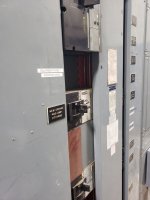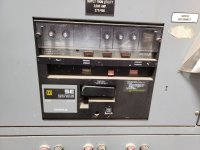Looking to make a bus connection at the end of the 3000A switchboard to get 120% out of the bus. However, the distribution section bus is only rated for 2000A. I'm assuming my starting point in my calculation would be 2000A which would make it impossible to add any load connection via the bus since we have a 3000A main circuit breaker?
There is a 1200A breaker in between the Main Circuit Breaker and the Dist Section which is how there is only a 2000A bus on the dist. section with the 3000A Main but if that 1200A load was removed wouldn't there be a potential issue with too much available current from the utility?
With similar logic couldn't we use whatever is left for amperage once the load of the 1200A breaker would be taken into account?
So if the load off that 1200A breaker was 1000A or less we would have 2000A * 1.20 worth of capacity at the dist. section or 2400A that we could put on that bus?
If the load was somewhere between 1000A and 1200A then we would have somewhere between 1800A-2000A * 1.2 of bus capacity left to hook into.
I know that's not the way it's written but just trying to think through the intent here.
There is a 1200A breaker in between the Main Circuit Breaker and the Dist Section which is how there is only a 2000A bus on the dist. section with the 3000A Main but if that 1200A load was removed wouldn't there be a potential issue with too much available current from the utility?
With similar logic couldn't we use whatever is left for amperage once the load of the 1200A breaker would be taken into account?
So if the load off that 1200A breaker was 1000A or less we would have 2000A * 1.20 worth of capacity at the dist. section or 2400A that we could put on that bus?
If the load was somewhere between 1000A and 1200A then we would have somewhere between 1800A-2000A * 1.2 of bus capacity left to hook into.
I know that's not the way it's written but just trying to think through the intent here.



